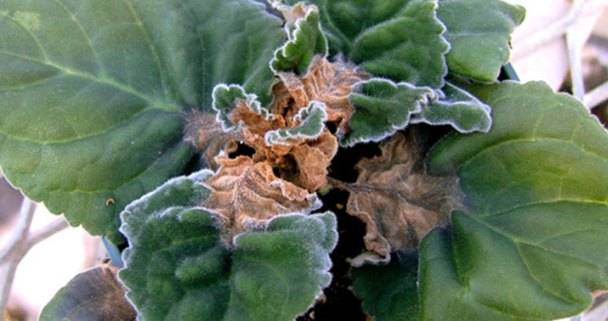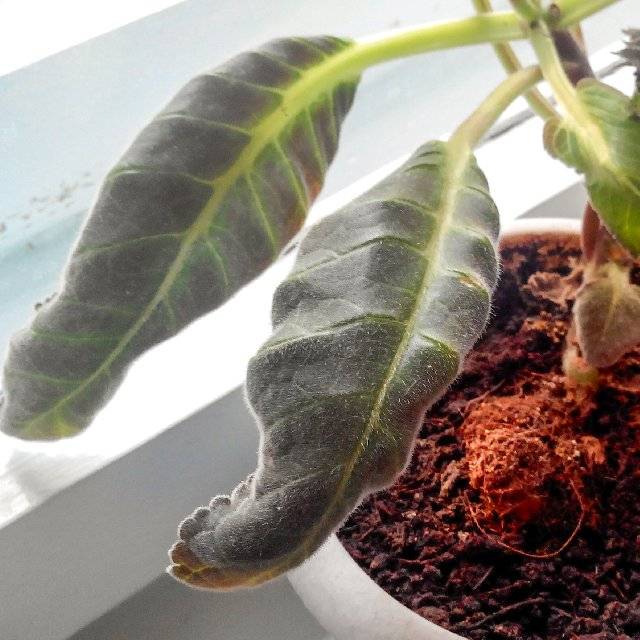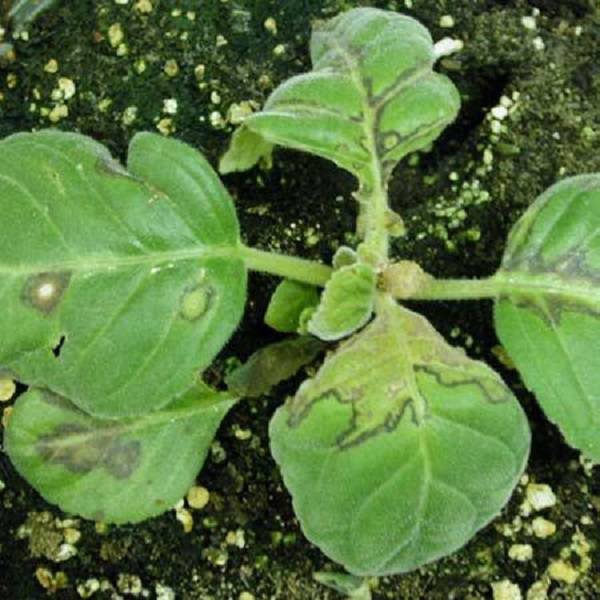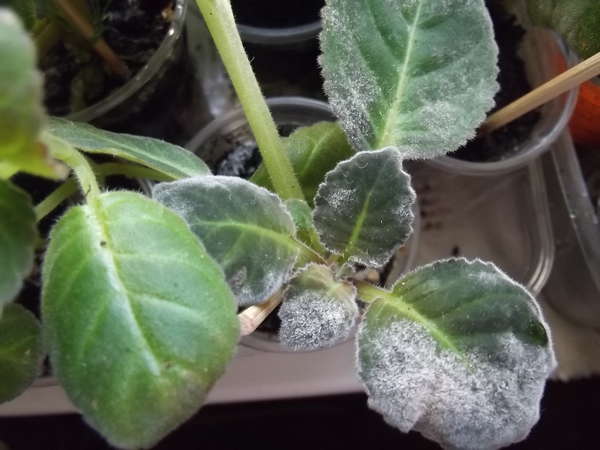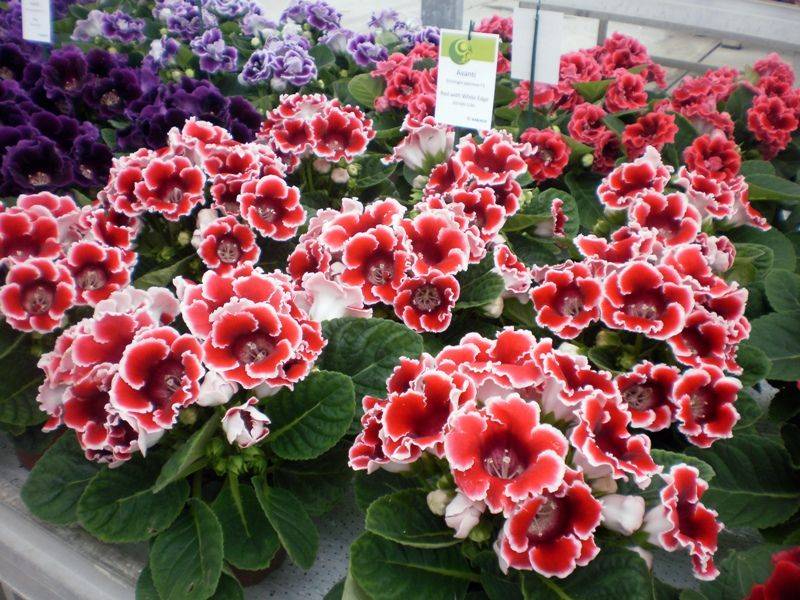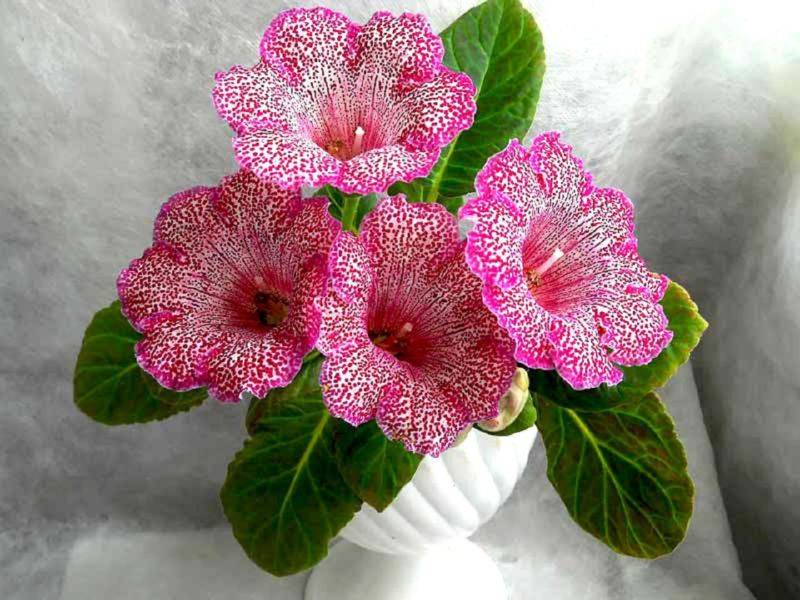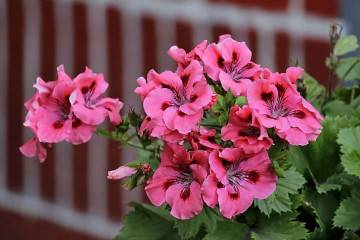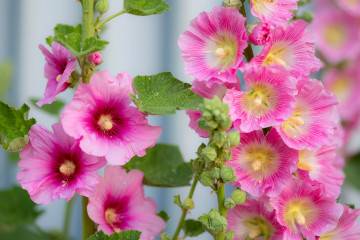Gloxinia diseases - what to do, how to deal with them
Content:
Gloxinia is a bright indoor flower that flower growers love very much. However, this capricious tropical plant is susceptible to many diseases. Gloxinia diseases must be recognized as early as possible and cured in time, otherwise you can quickly lose an exotic handsome man.
Gloxinia or sinningia - which can cause stunted growth and lack of flowering
Gloxinia or Sinningia is a perennial flower that is famous for its lush bloom. It can be grown in a room or in a greenhouse. Its dark green oval leaves are covered with a light downy. Big beautiful flowers, similar in shape to a bell, reach 10 cm in diameter and bloom from April to August.
Gloxinia is very sensitive and requires careful maintenance. There may be several reasons for her illness and wilting:
- improper care;
- inappropriate conditions of detention;
- fungal diseases;
- bacterial and viral infections;
- pests.
Gloxinia diseases
The increased risk of various diseases is caused by the weak immunity of a plant such as gloxinia. Leaf diseases and the treatment of these infections depends on the cause of these ailments. They can be triggered by fungi, viroses and bacteriosis, as well as pests. Not in all cases the flower can be cured.
Gloxinia leaf fungal diseases and their treatment
This is an extremely delicate flower that needs careful care, constant observation, and attentive care. Gloxinia leaves are often affected by fungal infections:
- anthracnose;
- ascochitis;
- downy mildew;
- powdery mildew;
- septoria;
- gray rot;
- phyllostictosis;
- late blight;
- fusarium.
The main symptom of downy mildew is that gloxinia leaves dry and curl up into a tube. Vague brown, yellow, red or purple spots can be seen on them. The causes of this ailment can be too acidic heavy soil, excessive humidity or night cold.
Several remedies are known:
- Ash infusion - 200 g of ash + 3 liters of boiling water. Cool and filter.
- Iodine milk - 10 liters of water + 1 liter of milk + 10-14 drops of iodine (4% solution).
- Choose one of the drugs: Vectra, Topaz or Thanos.
- Use "Gamair" 2-3 times with a break of 15 days.
Powdery mildew infects flowers during sudden changes in temperature and excessive humidity. The main symptom is a whitish bloom on the plant. It is necessary to cut off the damaged parts and treat gloxinia with such means as "Quadris", "Bayleton", "Raek", "Tilt", "But" or "Speed".
Septoria blight affects flowers in a dark, humid room. Yellowing of leaves and rusty spots on them are the most telling symptoms of this fungal infection. It affects the leaves, stem, buds. A diseased plant must be cut off and treated with Benomil or Maneb.
Gray rot appears due to overly dense moist soil. A gray coating appears on gloxinia.The affected areas are removed, then sprayed with any fungicides. The flower needs drier air and soil. To do this, you need to make good drainage by putting expanded clay, sand or vermiculite on the bottom of the pot. You need to water the flower much less often.
Fusarium is one of the main reasons why gloxinia leaves turn yellow. They curl, then darken and burst in several places. This fungus affects not only gloxinia, but also the soil in which it grows. Treatment regimen:
- Put new soil in the pot, previously watered with potassium permanganate.
- Soak the roots of the flower in a solution of potassium permanganate.
- Transplant into new healthy soil.
- Spray the plant and the ground with a fungicide.
Brown spots on gloxinia leaves
Not all fungal infections are easily and quickly treated. Late blight is especially dangerous for this plant. The main symptom of the disease is that gloxinia has brown spots on the leaves. A sick flower dies because this disease is incurable. In addition, late blight is highly contagious and can spread to other plants in the flower garden.
Description of the symptoms of late blight:
- a whitish coating appears on the back of the leaf;
- brown spots are formed on the leaves;
- the flower withers.
Late blight is very contagious and quickly affects all plants in the flower garden. It is necessary to remove the diseased flower along with the root as early as possible. For prevention, the rest of the flowers are sprayed with powerful fungicides - "Teneb" and "Kuprozan". In 10 liters of water, you need to dissolve 40 g of one of these medicines.
An anxious grower will try to figure out why gloxinia has brown spots on the leaves. It is advisable to carry out preventive treatments before the onset of signs of late blight.
Signs of anthracnose are numerous small brown specks. At first, they appear only on the leaves, but then they spread to the petals and stem. The disease develops very quickly and does not leave a diseased plant a chance for life. The affected gloxinia is removed along with the root. In order to prevent the appearance of this disease, it is treated with such means as "Kuproksat", copper oxychloride and "Oxyhom".
Ascochitis develops due to excessive air humidity. Gloxinia leaves may be covered with red or brown spots. A brown edging appears along the edges of the leaves. You can save the flower's life if you start treatment soon. The affected leaves are cut off and burned, and the flower itself is treated with the preparations "Adiga-peak", "Vectra" or copper sulfate. The second course of treatment is carried out after 7-10 days.
Phylostictosis appears as round brown spots on the leaves. Then, in place of these spots, the leaves crack and tear. It is necessary to carefully shake off the plant and dry it. For treatment, drugs such as Bordeaux liquid, copper sulfate and oxychloride are used.
Viral and bacterial diseases of gloxinia
Viruses and bacteria pose a mortal danger to gloxinia. There is no escape from these diseases, so they can only be prevented.
Viroses are diseases caused by viruses. They can be carried by parasites or fungi. Dark streaks appear on petals and leaves. The disease is incurable, so the infected flower must be burned.
Bacteriosis - ailments that affect all parts of gloxinia. To protect her from this, you should always disinfect your garden tools, flower pot and soil. For prophylaxis, it is necessary to process the flower with "Epin" and "Zircon". But already sick gloxinia cannot be cured, it is burned.
Gloxinia pests, how to fight
Pests not only eat parts of gloxinia, but can also carry dangerous viruses. If the grower does not know why gloxinia is withering, then he should pay attention to the condition of its leaves and flowers.
How to deal with parasites:
- Thrips - the leaves are covered with light lines, then turn yellow, wither, dry up and fall off. All plants in the room are treated with such products as "Vermittek", "Intavir", "Fitoverm", "Aklektik". After 10 days, the treatment is repeated. The diseased flower is isolated and treated separately.
- Scabbard - the leaves are covered with an adhesive film. It is necessary to manually wipe the entire plant with a cotton pad dipped in soapy water. The flower is sprayed with Aktar or Bankol and covered with foil for 3-4 days. Then they re-process, and also thoroughly wash the entire greenhouse.
- Spider mite - affects a flower during severe drought. Dark spots may appear on the leaves, then they brighten. It is necessary to water the flower more often and spray it with water. the soil is treated with "Temik" and "Aldikabr" preparations, and gloxinia itself - with "Fitoverm" and "Intavir" medicines. This should be done in 2 stages: after 10 days, the course of treatment is repeated.
- Mealybug - leaves are covered with a sticky white layer. All parts of the plant are wiped with a cotton pad moistened with alcohol, and then sprayed with such means: "Intavir", "Karbofos", "Aktellik", "Tsvetofos", "Fosbecid", "Decis".
- Whitefly - the stem and leaves are covered with a white coating and rot. Gloxinia is treated with such means as "Vertimek KE", "Admiral", "Oberon", "Kinmiks", "Actellik KE".
Basic care mistakes
A florist should know how to care for such a capricious flower like gloxinia. Home care and illness are interconnected: improper care of a flower weakens its immunity. The bush grows slowly and stops blooming due to poor conditions: due to dry air and drafts. Gloxinia or sinningia loves moist air. Leaves may turn yellow, stained and wither due to excessive dry air. For the same reason, gloxinia does not bloom.
This plant needs bright, abundant, but diffused lighting. It is advisable to cover the windows with curtains, blinds or make a small "tent" over the flower. Direct sunlight burns the leaves and petals. If there is not enough light, all parts of the plant turn pale, and the edges of the leaves are covered with a brown border.
Due to the heavy, dense, too wet soil, the roots rot and the plant dies. Therefore, you need to ensure good drainage and not overdo it when watering: 100-200 ml of liquid is enough. Expanded clay or perlite is placed on the bottom of the pot.
Why do gloxinia leaves curl
By the condition of the leaves, you can accurately determine whether the flower is healthy or not. Gloxinia leaves curl for various reasons:
- dry air;
- cold;
- excess moisture during watering;
- excess nitrogenous fertilizers in the soil;
- the presence of parasites;
- infection with diseases.
It is necessary to find out the cause of the disease, and then begin treatment.
Other Common Gloxinia Growing Problems
There are several more problems that arise when growing gloxinia, but they do not lead to the death of the flower. Removing these difficulties is easy.
Peduncles turn black due to too wet soil, excess nitrogen fertilizers, or too acidic soil pH. It is necessary to transplant gloxinia into a new soil and treat it with Fitosporin. It is necessary to feed with potassium-phosphorus fertilizers.
The flower, together with the peduncle, is crooked due to cold, drafts and lack of nutrients. It is necessary to put it in a warm place and feed it with complex fertilizers.
The stem can be very elongated due to poor lighting or due to the fact that the branches have not been pruned. You need to provide the flower with enough light. Young and mature gloxinia should be trimmed periodically.
Gloxinia is very whimsical. If careful care is neglected, her immunity weakens. Because of this, she can pick up dangerous infections. A significant part of gloxinia diseases are fatal for it. It is necessary to regularly treat the flower with fungicides and insecticides.

